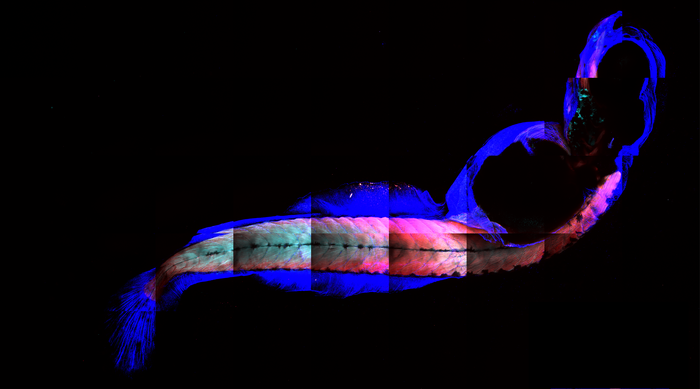Sarcopenia, the decline in muscle function that comes with age, is poorly understood. Now new research uses a new animal model—the African killifish—to reveal that muscles actually reverse to an “early-life” state toward the end of life, slowing mortality. This finding may provide a clue to slowing, halting, or even reversing age-related loss of muscle mass and strength.
This work is published in Aging Cell in the article, “The African killifish: A short-lived vertebrate model to study the biology of sarcopenia and longevity.”
According to Peter Currie, PhD, director of research at the University of Melbourne and Australian Regenerative Medicine Institute (ARMI) at Monash University said, “…there is a pressing need to understand the mechanisms that drive sarcopenia, so that we can identify and implement suitable medical interventions to promote healthy muscle aging.”
The African turquoise killifish, Nothobranchius furzeri, has recently emerged as a new model for the study of aging. Killifish have the shortest known life span of any vertebrate species that can be bred in captivity. Life for a killifish begins with the African rains, creating seasonal rain pools in which fish hatch, grow rapidly, and mature in as few as two weeks, and then reproduce daily until the pool dries out.
Importantly, their short life span is accompanied by symptoms of aging we see in humans—including the appearance of cancerous lesions in the liver and gonads, reduced regenerative capacity of the limbs, in this case the fin, and genetic characteristics that are the hallmark of human aging such as a reduction in mitochondrial DNA copy number and function and shortening of telomeres.
This is the first study to use the killifish to study sarcopenia.
“In this study, we performed a thorough cellular and molecular characterization of skeletal muscle from early life, aged, and extremely old late-life stages, revealing many similarities to sarcopenia in humans and other mammals,” noted Avnika Ruparelia, PhD, senior lecturer, anatomy and physiology, at the University of Melbourne.
More specifically, they used a systems metabolomics approach. In doing so, they revealed that “during aging there is a striking depletion of triglycerides, mimicking a state of calorie restriction. This results in the activation of mitohormesis, increasing Sirt1 levels, which improves lipid metabolism and maintains nutrient homeostasis in extremely old animals. Pharmacological induction of Sirt1 in aged animals was sufficient to induce a late life-like metabolic profile, supporting its role in life span extension in vertebrate populations that are naturally long-lived.”
The researchers also found these same metabolic hallmarks of aging are reversed during the late-life stage, “suggesting that in extremely old animals, there may be mechanisms in place that prevent further deterioration of skeletal muscle health, which may ultimately contribute to an extension of their life span,” Ruparelia said.
“Importantly, the late-life stage during which we observed improved muscle health,” she added, perfectly coincides with a stage when mortality rates decline. We, therefore, postulate that the improvement in muscle health may be a critical factor contributing to the extension of life span in extremely old individuals.”
“During extreme old age, there is a striking depletion of lipids, which are the main energy reserves in our cells,” explained Currie. “We believe that this mimics a state of calorie restriction, a process known to extend life span in other organisms, which results in activation of downstream mechanisms ultimately enabling the animal to maintain nutrient balance and live longer. A similar process is seen in the muscle of highly trained athletes.”



